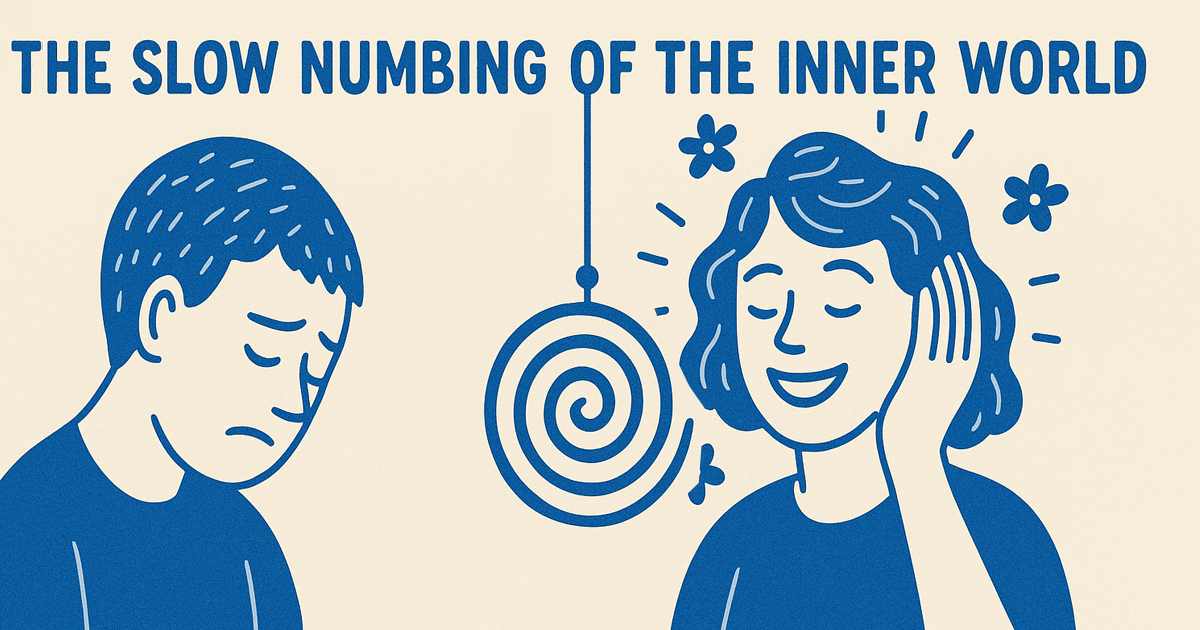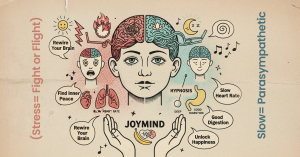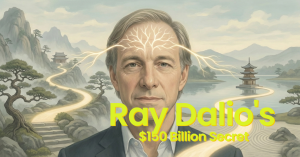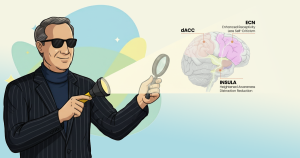Have you ever noticed that the things you used to love… just don’t move you anymore? Music falls flat. Conversations feel dull. Even joy itself seems like a memory.
If so, you’re not alone. Millions of people are quietly struggling with a condition called anhedonia—a psychological state where the ability to feel pleasure fades away. It’s one of the clearest signs that something in the soul has gone silent.
What Is Anhedonia?
Anhedonia is a symptom most often seen in major depressive disorder, but it also shows up in burnout, trauma, anxiety, and even chronic stress (American Psychiatric Association, 2013). It comes in two forms:
Social anhedonia: You lose interest in being with people, even those you care about.
Physical anhedonia: Food, touch, nature, music—none of it feels alive anymore.
For many, this leads to quiet suffering. Life becomes flat. We may still function—but inside, we feel empty.
Psychologist Carl Jung once wrote:
“The world today hangs by a thin thread, and that thread is the psyche of man… The modern man has lost his gods, and he has lost his soul.” (Jung, 1964, p. 237)
At Joymind, we see this every day—and we know there’s a way back.
Why Hypnosis Helps
Many people try to “snap out” of anhedonia. But willpower alone won’t fix it. That’s because the root of anhedonia lies below the surface—buried in the unconscious mind. That’s where hypnosis works best.
Our Joymind hypnosis programs use guided trance to bypass mental blocks and speak directly to the emotional brain. In this state, healing begins naturally.
Here’s how hypnosis helps:
1. Releases Emotional Blocks
Hypnosis helps people access frozen emotions from past experiences—especially trauma—and gently release them. This creates room for new feelings to emerge.
2. Restores the Brain’s Reward System
Post-hypnotic suggestions help “retrain” the brain’s pleasure circuits. Over time, clients begin to re-engage with life—music, relationships, movement, beauty.
3. Reawakens the Senses
Hypnosis brings people back to the present moment. Clients begin to feel again—the sun on their skin, the taste of food, the comfort of a loved one’s voice.
4. Speaks in Symbols
We use metaphors—like frozen rivers thawing or closed flowers blooming—to activate deep change. These images bypass logic and speak directly to the soul.
As Jung (1959/1981) said, symbols are “transformers of energy.” In trance, these images start to restore what was lost.
The Role of Journaling
Alongside hypnosis, journaling helps reconnect with parts of yourself that have been silent. When you write, you’re not just recording thoughts—you’re opening a dialogue with the unconscious. This is the foundation of my book Way Ahead, where journaling becomes a sacred tool for rediscovering meaning.
Together, hypnosis and journaling create a powerful path forward.
You Are Not Alone—There Is a Way Ahead
So many people are silently suffering from anhedonia. They appear “fine” on the outside, but inside, life feels colorless. At Joymind, we know how to help. Our sessions aren’t just about feeling better—they’re about helping you feel again.
Whether you’re facing burnout, heartbreak, or a deeper sense of disconnection, the way ahead begins with listening. It begins with turning inward.
Hypnosis can help you hear what’s been buried. Journaling can help you see it. And together, they can lead you back to joy.
References
American Psychiatric Association. (2013). Diagnostic and statistical manual of mental disorders (5th ed.). https://doi.org/10.1176/appi.books.9780890425596
Jung, C. G. (1959/1981). The archetypes and the collective unconscious (2nd ed., R. F. C. Hull, Trans.). Princeton University Press. https://amzn.to/45GPBlt
Jung, C. G. (1964). Man and His Symbols. Dell Publishing. https://amzn.to/3HTDqrF
Khazraee, H., Bakhtiari, M., Kianimoghadam, A. S., & Ghorbanikhah, E. (2023). The effectiveness of mindful hypnotherapy on difficulties in emotion regulation and mental health. Journal of Education and Health Promotion, 12, 365. https://pubmed.ncbi.nlm.nih.gov/38144000/
















